SUMMARY
This is AI generated summarization, which may have errors. For context, always refer to the full article.
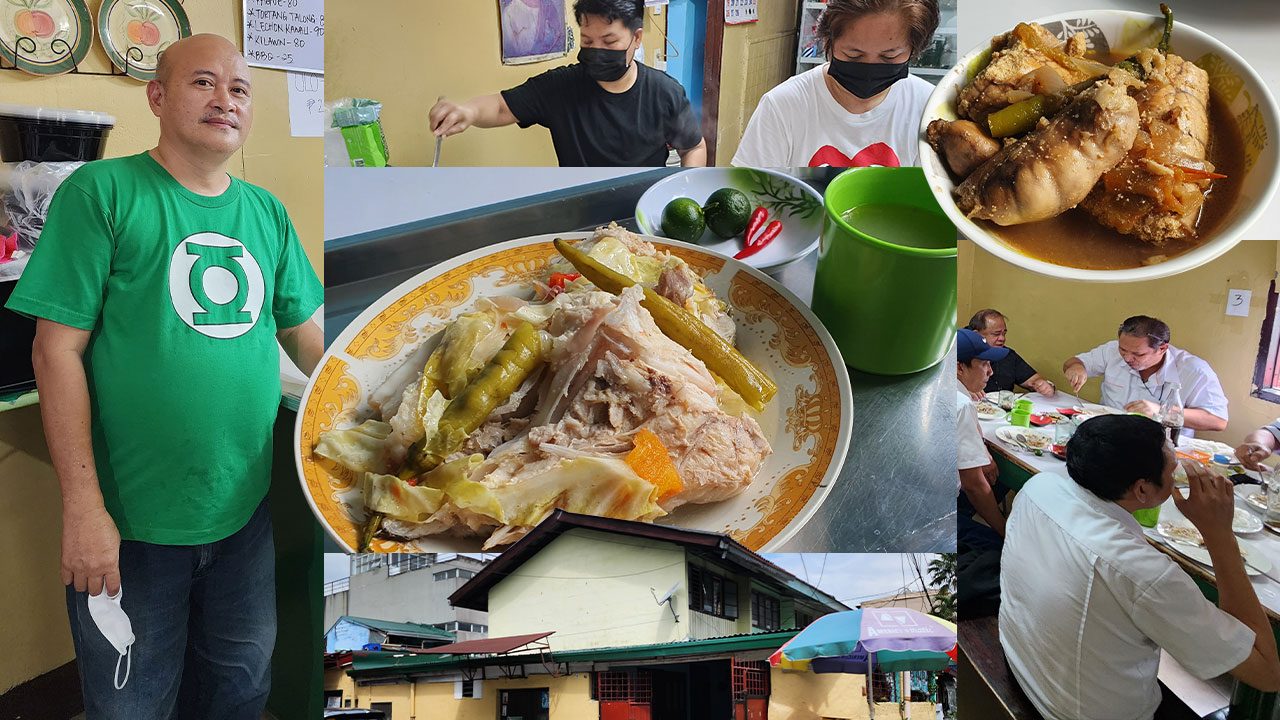
The work at Ulo-Ulo Carinderia, like most eateries, starts at break of day. At around 5 am from Monday to Saturday, 31-year-old Mark Deyto and his crew prepare to receive 150 kilograms of fish heads in their home-turned-eatery along sleepy, tree-lined Road 10 in Quezon City. The fish heads, usually salmon, lapu-lapu, and maya-maya, are to be delivered by different suppliers.
After the heads are delivered, the crew commence cleaning them and preparing the other ingredients for their one, hero dish – the specialty their place has been celebrated for for decades. In large cooking vats, the heads will boil in a broth made sour by dried kamias and tomatoes, sweetened by radish and onions, and given a piquant kick by green peppers. Mark lets the staff do their thing. He concedes that they’ve been doing this for longer than he has. They know their duties by heart, he says, and need little to no supervision. There are no rules, except one. That is, that the food should taste as good as it did yesterday.
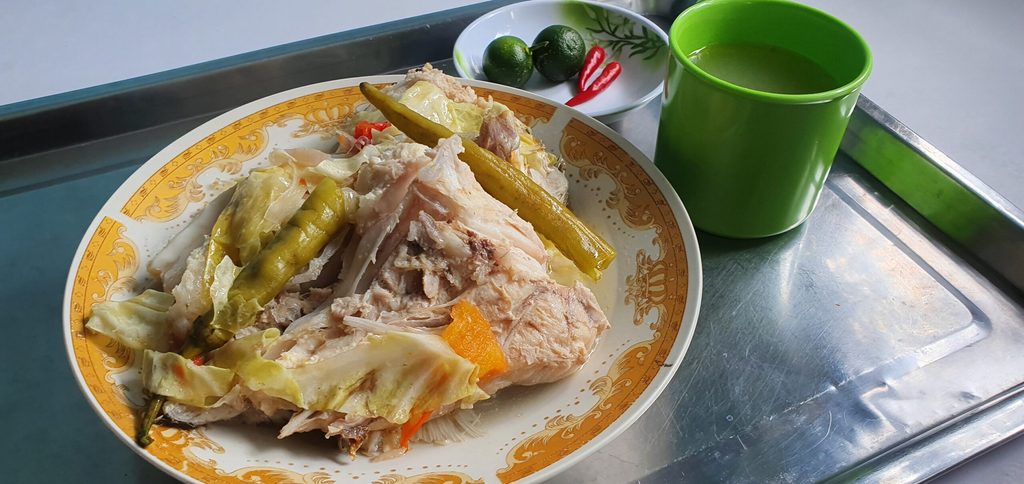
Of course, the patrons don’t see this. What they see, instead, is a bowl filled to the brim with their order of fish head, and a plastic cup of milky white broth. One is free to ask for more soup; in a carinderia, that is a given. There is magic in that broth, a tonic of collagen derived from kilos of heads boiled at once. There is no replicating what they offer at home, not even after picking Kuya Jun’s brain. Kuya Jun is in charge of the fish heads, and he’s been at it for more than 10 years already, along with the other cooks – Ate Maris for the other ulam, Tito Oriel for some dishes here and there.
No elaboration of the process or ingredients would yield the same result as that which you could get here, not unless you were prepared to buy the said kilos, and have a large pot on hand, and the time to cook them, and the recipe, and the knowledge from years of experience to treat these delicate things so they do not turn to mush, but rather come as tender morsels that have enough bite to fulfill our latent, animal desire to chew on something.
The lunch crowd, which arrives by the time they open at 10 am, comes in droves. To eat here is to see an egalitarian society realized — rich and poor, executives and construction workers, sales agents and government employees, are seated in long benches elbow to elbow in the dark hall of the eatery, and everyone must fall in line, no preferential treatment based on class or wherewithal is given. Mark’s favorite task during dining service is directing the customers to their table. It’s easy to spot him — a short and stocky man with a benign demeanor that the mask that covers half his face cannot hide. Or rather, he will find you, as he regularly scours the place for newcomers.
He’s obviously nice. His eyes give him away; there is a kindness there that one recognizes in an instant. His soft, steady voice is reassuring, as if, though he uses different words, what he actually means to say is, “Be patient. I’m here, you’ll be having your fill soon.” He gets a thrill from the otherwise mundane task — there’s a puzzle to be solved on busy hours, like where to fit a group of three when all tables are filled. Would the group mind not having adjacent seats, would the other eaters at a table that had some space adjust to accommodate them. There’s some number-crunching, too. To have this kind of problem is good, because, as he says, if there are no free tables, that means the customers have come. There would be money for paying the staff, for the next day’s operations. Amid a pandemic, the idea of a food establishment relying on money has been driven home. Hard.
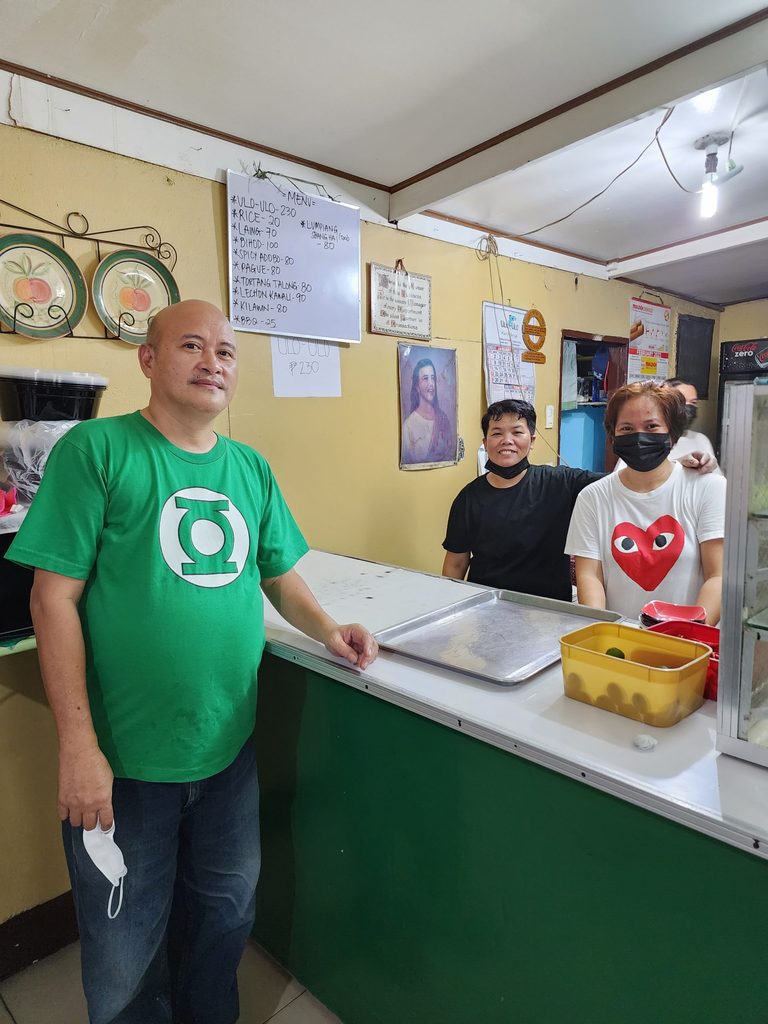
Mark is the younger of two siblings. An IT undergrad, he has worked in the business process outsourcing industry and done freelance jobs as a graphic artist, besides doing errands for their family business. He now manages the place, the onset of the pandemic demanding from him a greater role, and from their business as a whole a total rethink in how they were to do things to survive. There’s no one better to take over. After all, he’d seen how the business operated growing up. On summer months when he was a kid, he’d been tasked with doing the dishes. He’d also been on trips to the market with his father to buy the fish heads and other items. The rethink included having his elderly parents, Danilo and Milagros, take the back-seat, what with the strict protocols imposed by the hard lockdown in 2020, and more importantly, to protect them from the threat of infection. His father, who had just turned 64 this October, had been largely responsible for turning their eatery into the household name that it is.
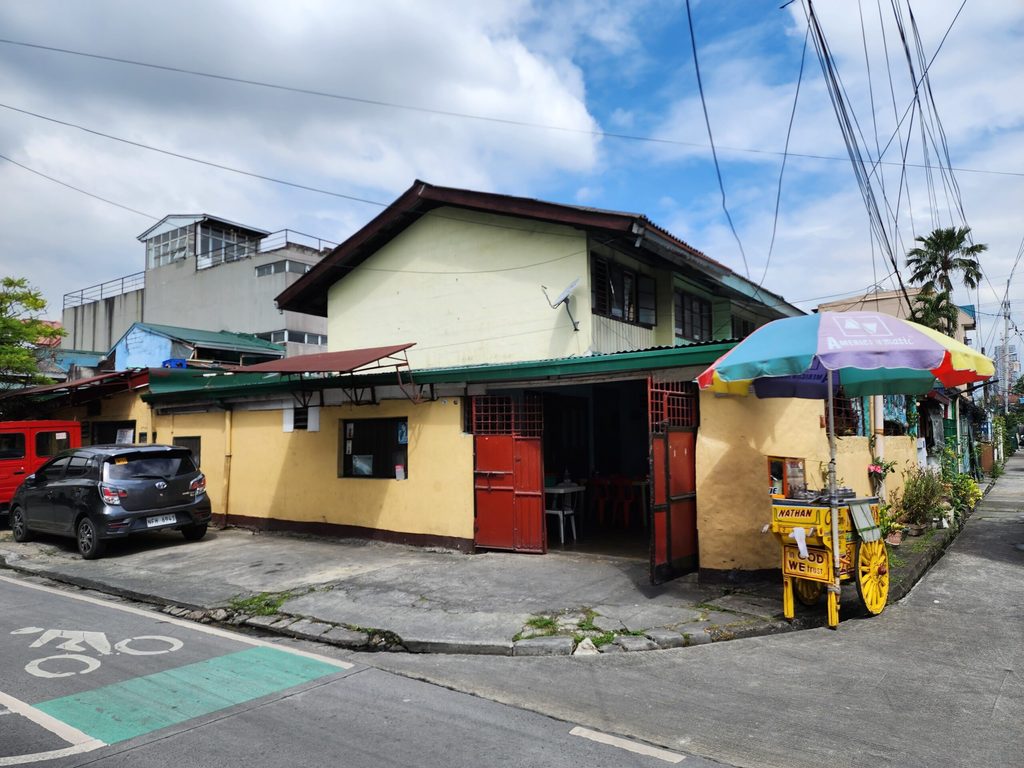
Ulo-Ulo Carinderia opened back in the early 1980s. Danilo’s aunt had been the one to start the business, with the former working for her. After his aunt died, and having saved enough money to buy off the direct heirs, Danilo had taken over the place in the early 2000s. In the era of satellite navigation and Waze, it is easy enough to find the eatery’s location amid the maze-like side streets behind the Veterans Memorial Medical Center. Pre-Waze and Google Maps, which was when I had first encountered the place in 2006, one simply had to look for the cars lined up and parked along the narrow street, then find the two-story house, the only one that is bustling with activity, with people spilling out onto the street especially at the peak hour of 12 noon. Right outside the gate, a sorbetero has made his cart a semi-permanent fixture, as much a part of the lunch offering as the sinigang na ulo, spicy pork adobo, fish egg adobo, laing, lechon kawali, balatong, and other viands that are on sale.
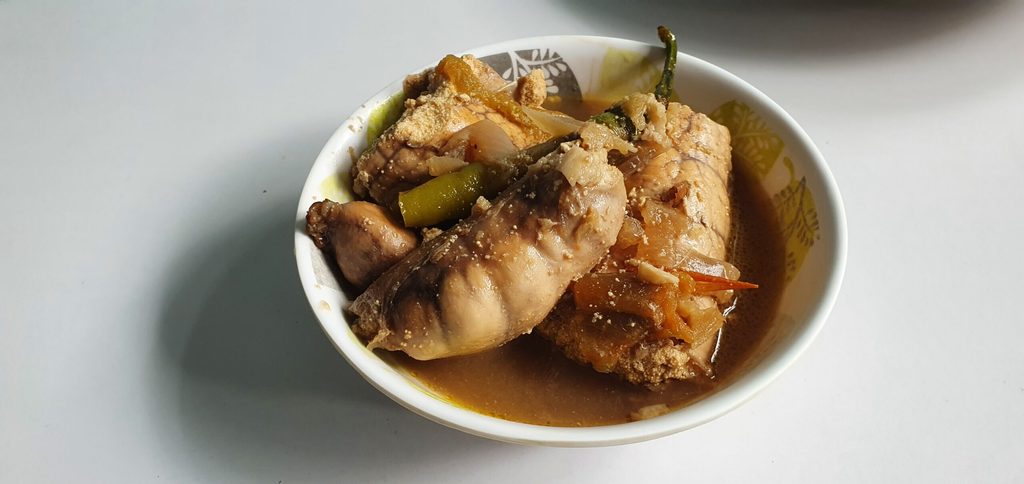
At a restaurant, we diners tend to overlook the confluence of factors that have to fall into place in sync so we could enjoy the food we have come for. We are too busy with our own lives, and especially at lunch during the workday we find it difficult to let go of our preoccupations with our own livelihoods — a snide remark from the boss or a disagreeable colleague before you clocked out; a meeting later in the afternoon; the pending work we’d left behind and dread getting back to.
At a home that has been converted into an eatery, the clues that we find in the architecture of the place are absent. Within the dim hall, one cannot see the passing of time, usually detectable in the peeling of the wall-paint and cracks on the floor and pillars. Even one such as me, who’d made a habit of Friday lunches there, a concession towards more healthy eating that I kid myself compensates for the bad habits for the rest of the week, hadn’t even bothered asking how old the place is – it turns out, as old as I am, at least, or older – or about other stuff, the ones we ask of our friends. And Ulo-Ulo plays that role, I realize, if a place could be called a friend, or whatever you call that which is constant and reliable.
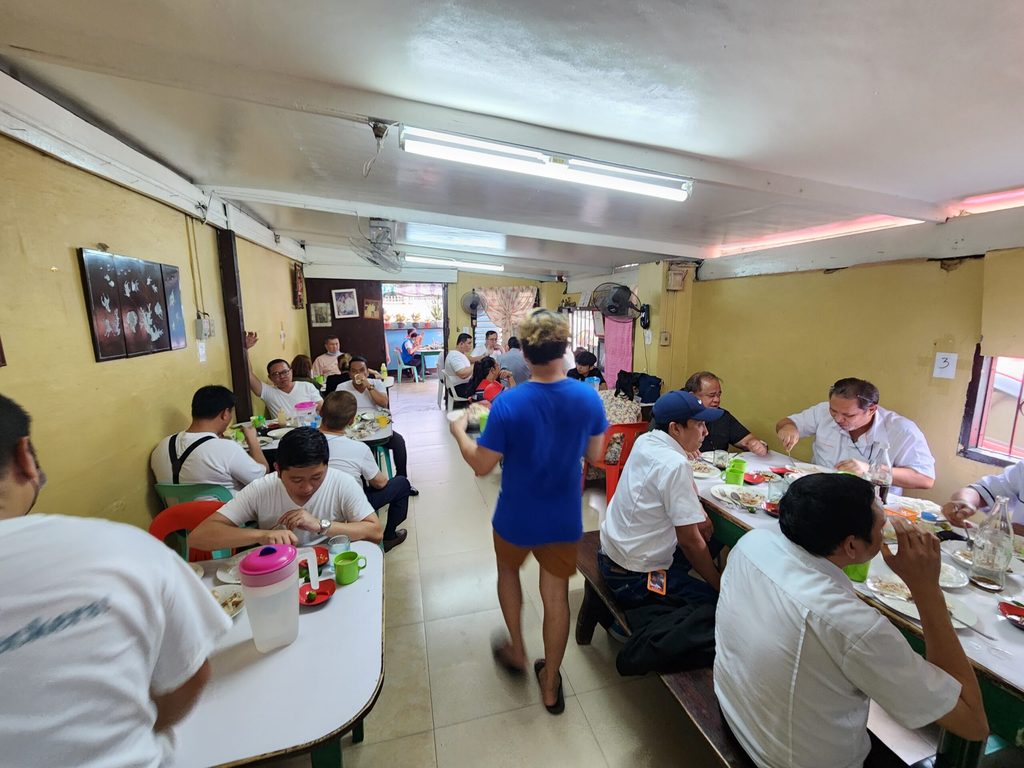
Indeed, if there ever were a word to describe the work that Mark, and before him, Danilo, and before him still, his aunt, and their companions do, it is constancy, their ability to churn out consistently, reliably, good food that is guaranteed to warm not just guts, but soul. Doing rough arithmetic, that would be around 300 days in a year, minus Sundays and the odd holiday, multiplied by around 40 years, that they have been providing their patrons with bowls of fish heads. No matter that one of the cooks felt bad, or maybe someone’s pet or relative had died, or someone had gone through a breakup — their feelings and circumstances are subsumed in the service of the fish heads for which their patrons, like pilgrims, have come on a holy lunch hour. – Rappler.com
Add a comment
How does this make you feel?
There are no comments yet. Add your comment to start the conversation.